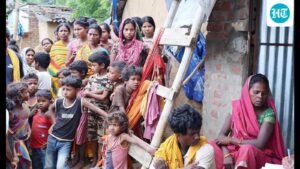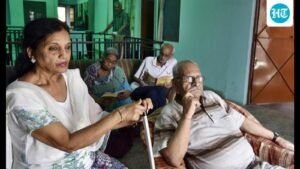
India, now the world’s most populous nation and the fourth-largest economy, has a remarkably young population, 60% are under 35. Life expectancy has surged from 32 years in 1947 to 70.8 in 2025, reflecting economic growth and evolving health care.

But, demographic tides are shifting. Fertility rates have dipped below the replacement level of 2.1, driven by rising education, urban lifestyles, and cost of living. Seniors (60+) will grow from 7–10% today to nearly 20–25% by 2050. Youth will decline to around 35–40%, and the median age will rise sharply. India has some catching up to do.
This transition must be seen through the lens of the Viksit Bharat mission. Its four pillars: shelter (youth), gareeb (the poor), women (women), and Annadata (farmers/rural India), intersect directly with ageing. Indians are also predisposed to chronic lifestyle diseases like diabetes, hypertension, cardiovascular ailments, and dementia, all of which drive up health care costs.
From welfare to well being: Article 41 of the Constitution directs the State to provide assistance to senior citizens — a critical mandate for rural India, where 60% of the population lives and most seniors rely on family support. Migration, urbanization, and the decline of joint families are straining this safety net.
Over the decades, several landmark measures have taken shape. The National Policy on Older Persons (1999), and its revised version of 2011, laid a framework for social, economic, and health security. The National Program for Health Care of the Elderly (2010) introduced preventive, curative, and rehabilitative care through PHCs and geriatric wards.
Traditionally, Indian families cared collectively for elders. But as joint families shrink, many seniors face financial insecurity, loneliness, and, increasingly, abuse or abandonment. The Maintenance and Welfare of Parents and Senior Citizens Act (2007) provides legal recourse against neglect, a crucial safeguard, especially for widowed or uneducated women facing inheritance disputes.
In June 2025, a draft National Policy for Senior Citizens (NPSC) was announced to address gaps in the outdated NPOP. It aims to strengthen geriatric health care through Ayushman Bharat–like models, enhance financial security, create employment avenues for seniors, build housing for BPL populations, enable digital inclusion, and foster intergenerational social support.
India also has a range of pension and savings schemes: SCSS, PMVVY, IGNOAPS, AVYAY, and NPHCE, but awareness remains patchy, especially in rural areas. Helplines like Elderline (14567) and grievance portals help bridge this gap, but information access and stigma persist. Real change will need the combined force of government, society, and markets.
The silver economy: Since the 1991 reforms, India’s rising purchasing power and expanding middle class have spurred a growing “silver economy” catering to seniors’ needs.
Assistive & health technology: From walkers and wearables to telemedicine and home diagnostics, the sector is growing at nearly 12% annually.
Home & institutional care: Agencies offering 24/7 caregivers have mushroomed, providing crucial support for families separated by migration. But quality concerns persist, calling for regulation and training standards.
senior living: This $7 billion market is growing at 15% CAGR, with developers treating senior housing as an emerging asset class.
Insurance & financial products: Senior health insurance penetration remains below 10% but is expected to double within a decade. Public schemes like Ayushman Bharat and Jan Aushadhi help ease costs for lower-income groups.
India’s tech ecosystem presents a massive opportunity. With expanding smartphone penetration and digital inclusion, seniors can increasingly manage pensions, access telehealth, and stay connected through mobile platforms.
Society’s catalytic role:The most meaningful change must come from society. Aging is not a disease — it is a natural progression of life. A culture that values its elders strengthens its social fabric. Communities must be sensitized to senior rights, protection mechanisms, and available schemes. Urban planners must design age-friendly infrastructure, accessible housing, safe public spaces, reliable transport, and easy health care access.
Social isolation and neglect can erode dignity as deeply as illness. A society that celebrates its elderly not only honors its past but secures its human future.
The road ahead:The senior care sector, spanning housing, health care, insurance, and technology, is poised to become a major industry. Growth must be underpinned by regulations for assisted living, tax incentives, and strong quality standards. Innovation in affordable models such as home care, remote monitoring, and shared facilities will be critical for inclusion. Public-private Partnerships can bridge gaps, combining government schemes with private efficiency, while civil society ensures accountability.
As citizens, every individual deserves to age with dignity, supported by family, community, and systems that care. A society that plans for its elderly plans for its own future.
Malathi Renati is Head of the Policy School at Takshashila Institution. The views expressed are personal





